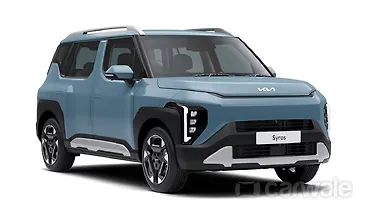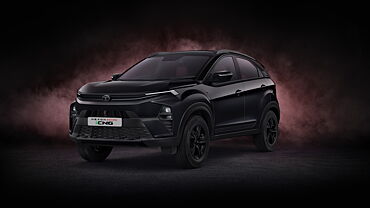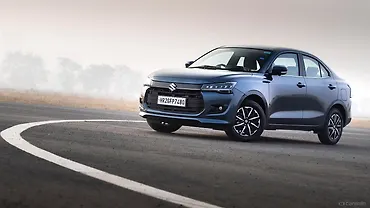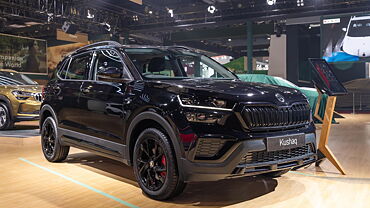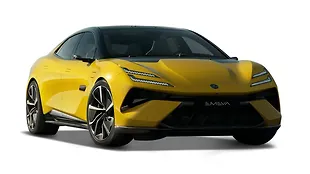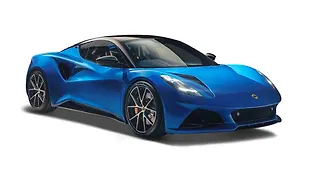
 Hyundai Motors India Limited (HMIL) played host to a limited audience for a visit to their plant in Chennai. The ride from the airport to the plant was estimated to be around an hour and a half. We passed the roads of a state where politics was defined by a demigod named Karunanidhi and regional films boasted of a God named Rajnikanth. With posters pasted on either side of the road which lead to the plant, the beginning of the hour long journey already looked interesting. The Hyundai H1 that we were travelling gave the word ‘comfort’, a whole new meaning and the somewhat long journey was a breeze.
Hyundai Motors India Limited (HMIL) played host to a limited audience for a visit to their plant in Chennai. The ride from the airport to the plant was estimated to be around an hour and a half. We passed the roads of a state where politics was defined by a demigod named Karunanidhi and regional films boasted of a God named Rajnikanth. With posters pasted on either side of the road which lead to the plant, the beginning of the hour long journey already looked interesting. The Hyundai H1 that we were travelling gave the word ‘comfort’, a whole new meaning and the somewhat long journey was a breeze.
As we headed towards the Sriperumbudur Taluk on the Bangalore highway, we noticed a Rajiv Gandhi Smarak  on the right, which brought back memories of the ex-Prime Ministers assassination in the region. We couldn’t help but visit it on our way back and we owe it to Hyundai to have complied with the request. Our eyes turned back on the highway and within minutes we noticed the SIPCOT Industrial Park and seconds later we stopped at the Hyundai gates. Hyundai Motors India opened the doors to their factory after the regular security checks and welcomed us into the land were cars were built from scratch.
on the right, which brought back memories of the ex-Prime Ministers assassination in the region. We couldn’t help but visit it on our way back and we owe it to Hyundai to have complied with the request. Our eyes turned back on the highway and within minutes we noticed the SIPCOT Industrial Park and seconds later we stopped at the Hyundai gates. Hyundai Motors India opened the doors to their factory after the regular security checks and welcomed us into the land were cars were built from scratch.
 The land on which the plant is set up was allotted to Hyundai Motors India in the year 1996 and from then on there was no looking back. Hyundai setup a factory on the 550 acre land in a span of 18 months and production of vehicles started then on. As we were briefed about the company by R. Sethuraman, Sr. VP Finance and Corporate Affairs, that this was the largest investment made by Hyundai in India and looking at the way the Indian car market was growing, it would be only time that Hyundai pumped in more money.
The land on which the plant is set up was allotted to Hyundai Motors India in the year 1996 and from then on there was no looking back. Hyundai setup a factory on the 550 acre land in a span of 18 months and production of vehicles started then on. As we were briefed about the company by R. Sethuraman, Sr. VP Finance and Corporate Affairs, that this was the largest investment made by Hyundai in India and looking at the way the Indian car market was growing, it would be only time that Hyundai pumped in more money.
“Hyundai has plants in other countries like Russia, Turkey, China, Korea and the U.S. and as the markets expand Hyundai will make look at expansion plans.†added R. Sethuraman. Banking on the 20% growth that Hyundai India saw in the domestic market, the company has reduced their exports to 45% from 60% and are now concentrating on the increasing demand for their cars in India.
With two fully functional and half robotic plants churning out 2200 cars a day, not only do they need to  employ trained technicians but also take care of the 10,000 employees that work in the plant in 3 shifts. It indeed is a huge responsibility to make sure that all the employees are taken care of and the company in fact does a lot in doing just that. To start off the company employs students from the neighbouring Engineering Colleges and thus helps generate employment locally. Once recruited the new technicians head off to Korea where they are trained, after which their expertise is put to use in the Chennai plant. Another step that helps the employees is a fleet of 125 buses, that ply to and fro to pick up and drop them as and when their shift begins or ends. Canteens in the plant premises also are a great help to the employees.
employ trained technicians but also take care of the 10,000 employees that work in the plant in 3 shifts. It indeed is a huge responsibility to make sure that all the employees are taken care of and the company in fact does a lot in doing just that. To start off the company employs students from the neighbouring Engineering Colleges and thus helps generate employment locally. Once recruited the new technicians head off to Korea where they are trained, after which their expertise is put to use in the Chennai plant. Another step that helps the employees is a fleet of 125 buses, that ply to and fro to pick up and drop them as and when their shift begins or ends. Canteens in the plant premises also are a great help to the employees.
We headed to Plant 2 where the Hyundai i10 and the Verna are assembled. Once there, we were informed  about the way the plant functions. We were told that things were easier because the platform was automated and their technicians were efficient enough to handle the load of the day. During our visit we got to see the Hyundai i10 and the Verna taking shape as cars in front of our eyes. The R&D followed by the making of the actual product was something that we had only heard of and now as we saw the i10 chassis lined up to be fitted with everything from the dashboard to the engine to the doors, gearbox, pedals, tail lamps and to witness the pace at which the technicians work and at the end of it all give us a product that is not only foolproof but good to go.
about the way the plant functions. We were told that things were easier because the platform was automated and their technicians were efficient enough to handle the load of the day. During our visit we got to see the Hyundai i10 and the Verna taking shape as cars in front of our eyes. The R&D followed by the making of the actual product was something that we had only heard of and now as we saw the i10 chassis lined up to be fitted with everything from the dashboard to the engine to the doors, gearbox, pedals, tail lamps and to witness the pace at which the technicians work and at the end of it all give us a product that is not only foolproof but good to go.
 The robots operate sequentially and are programmed to singularly handle the welding of parts. The assembly line too is programmed which moves the cars on a platform and the technicians work hand and glove in piecing together the parts of the car. It is indeed like a magic trick and at the end of the day voila! a car is born. It is easier said than done but the i10 that one drives on the road goes through some stringent quality check and if there is a flaw in the product, it is immediately addressed.
The robots operate sequentially and are programmed to singularly handle the welding of parts. The assembly line too is programmed which moves the cars on a platform and the technicians work hand and glove in piecing together the parts of the car. It is indeed like a magic trick and at the end of the day voila! a car is born. It is easier said than done but the i10 that one drives on the road goes through some stringent quality check and if there is a flaw in the product, it is immediately addressed.
 We were informed that a car is born every 55 seconds and looking at the way in which the people in the plant dedicatedly pieced the jigsaw, well we were left in shock and awe. The other plant, Plant 1, we were told, manufactures the i20, the Accent and the Sonata Transform. We did not get to visit the plant but we did get to understand the effort that went into in the making of a car.
We were informed that a car is born every 55 seconds and looking at the way in which the people in the plant dedicatedly pieced the jigsaw, well we were left in shock and awe. The other plant, Plant 1, we were told, manufactures the i20, the Accent and the Sonata Transform. We did not get to visit the plant but we did get to understand the effort that went into in the making of a car.
 The plant also houses two test tracks where the cars undergo testing for performance, suspension, turning radius and safety. There is no dearth of greenery around the plant but there is a special place indeed which is greener than the rest. A small green spot amidst the concrete plant brings out a whole new side of the plant itself. An artificial waterfall, a few fountains, and a garden just help put your mind to rest.
The plant also houses two test tracks where the cars undergo testing for performance, suspension, turning radius and safety. There is no dearth of greenery around the plant but there is a special place indeed which is greener than the rest. A small green spot amidst the concrete plant brings out a whole new side of the plant itself. An artificial waterfall, a few fountains, and a garden just help put your mind to rest.
 The plant visit was an enlightening experience and car manufacturers do put in a lot of sweat and blood to get these beauties on the road. A plant visit does change your perception about the car as you see it pieced together part by part. We thank Hyundai for making us a part of this experience and we sure hope to get similar opportunities in the future. We have a few videos that would show you what we experienced.
The plant visit was an enlightening experience and car manufacturers do put in a lot of sweat and blood to get these beauties on the road. A plant visit does change your perception about the car as you see it pieced together part by part. We thank Hyundai for making us a part of this experience and we sure hope to get similar opportunities in the future. We have a few videos that would show you what we experienced.
 So, if you are a proud owner of a Hyundai car, watching your baby being pieced together would just give you an idea of how your car was treated. It’s a few good things that matter and if you ‘Drive your Way’ you always will enjoy the ride and we hope this experience that we share with you not only enlightens you but also makes you aware how precious your car really is!
So, if you are a proud owner of a Hyundai car, watching your baby being pieced together would just give you an idea of how your car was treated. It’s a few good things that matter and if you ‘Drive your Way’ you always will enjoy the ride and we hope this experience that we share with you not only enlightens you but also makes you aware how precious your car really is!
Check out our videos here
Hyundai Chennai Visit Part 1
Hyundai Chennai Visit Part 2













